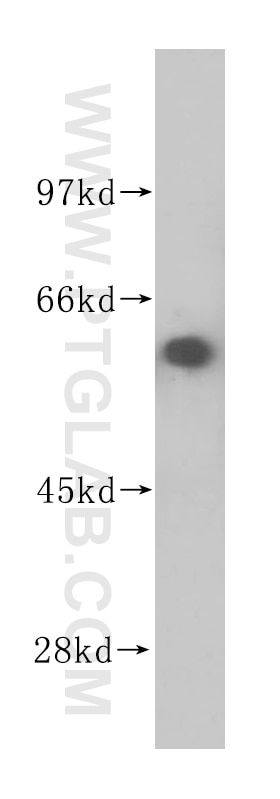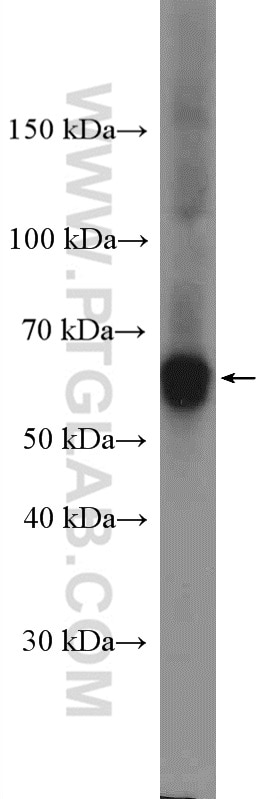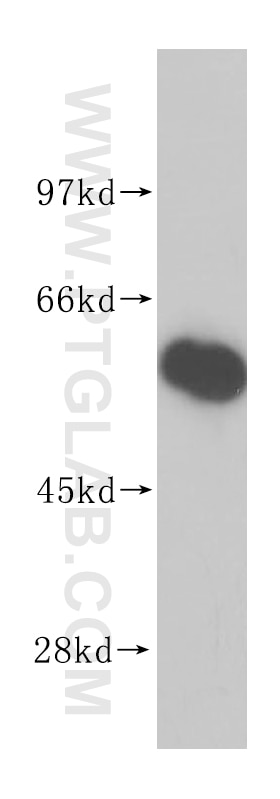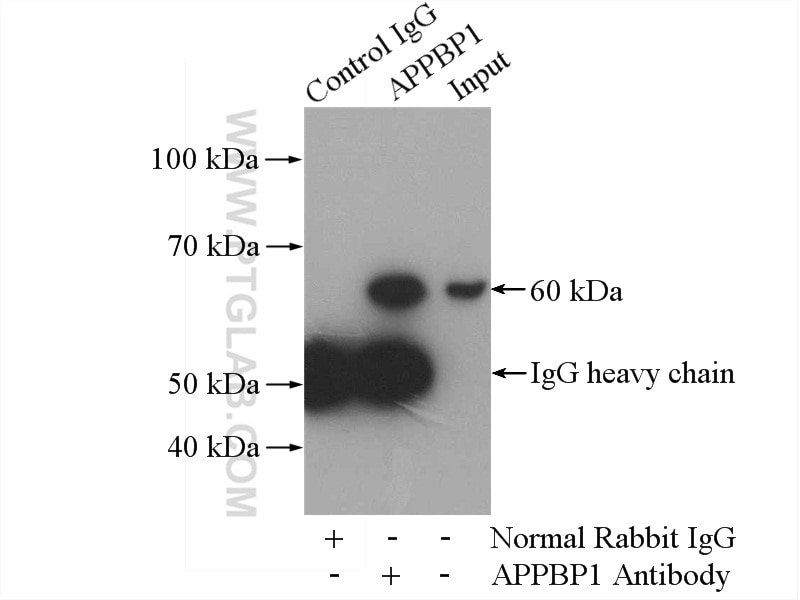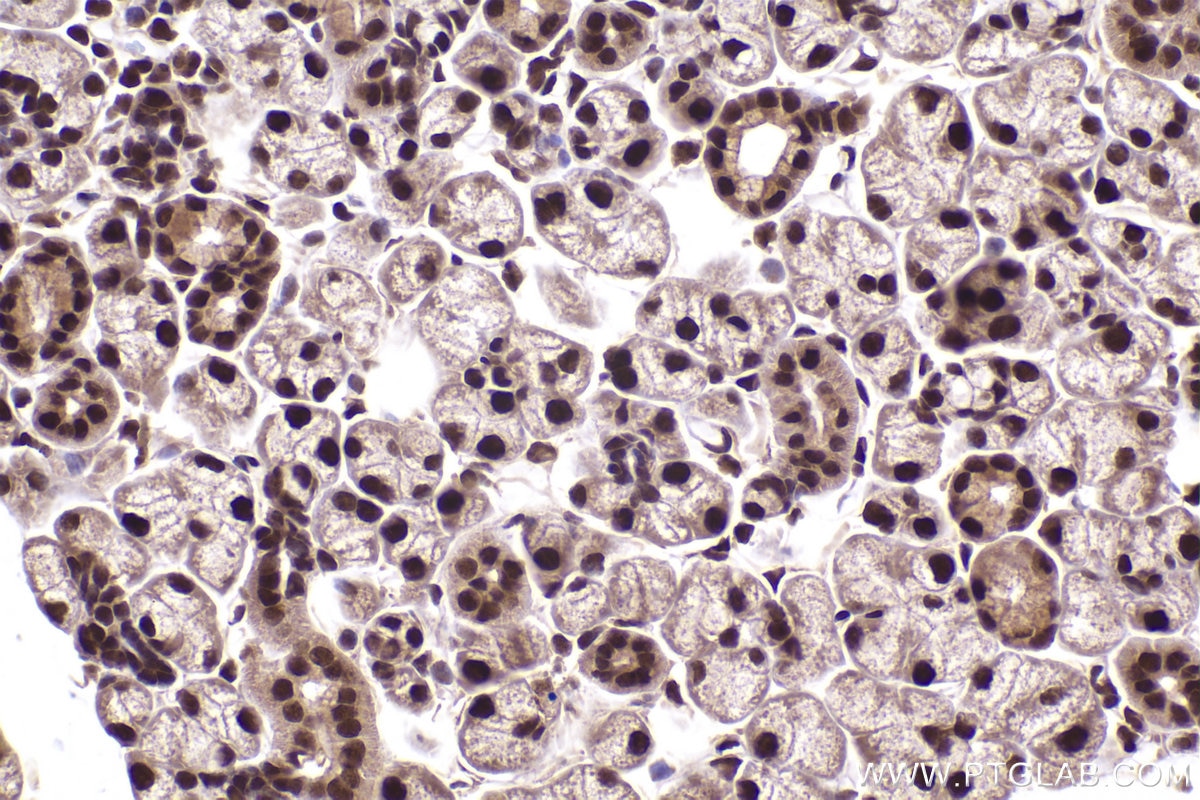- Phare
- Validé par KD/KO
Anticorps Polyclonal de lapin anti-APPBP1
APPBP1 Polyclonal Antibody for WB, IHC, IP, ELISA
Hôte / Isotype
Lapin / IgG
Réactivité testée
Humain, rat, souris
Applications
WB, IHC, IP, ELISA
Conjugaison
Non conjugué
N° de cat : 14863-1-AP
Synonymes
Galerie de données de validation
Applications testées
| Résultats positifs en WB | tissu rénal humain, tissu cérébral de souris, tissu cérébral humain |
| Résultats positifs en IP | tissu rénal de souris |
| Résultats positifs en IHC | mouse salivary gland tissue, il est suggéré de démasquer l'antigène avec un tampon de TE buffer pH 9.0; (*) À défaut, 'le démasquage de l'antigène peut être 'effectué avec un tampon citrate pH 6,0. |
Dilution recommandée
| Application | Dilution |
|---|---|
| Western Blot (WB) | WB : 1:500-1:2400 |
| Immunoprécipitation (IP) | IP : 0.5-4.0 ug for 1.0-3.0 mg of total protein lysate |
| Immunohistochimie (IHC) | IHC : 1:250-1:1000 |
| It is recommended that this reagent should be titrated in each testing system to obtain optimal results. | |
| Sample-dependent, check data in validation data gallery | |
Applications publiées
| KD/KO | See 1 publications below |
| WB | See 1 publications below |
| IHC | See 1 publications below |
Informations sur le produit
14863-1-AP cible APPBP1 dans les applications de WB, IHC, IP, ELISA et montre une réactivité avec des échantillons Humain, rat, souris
| Réactivité | Humain, rat, souris |
| Réactivité citée | Humain |
| Hôte / Isotype | Lapin / IgG |
| Clonalité | Polyclonal |
| Type | Anticorps |
| Immunogène | APPBP1 Protéine recombinante Ag6672 |
| Nom complet | NEDD8 activating enzyme E1 subunit 1 |
| Masse moléculaire calculée | 60 kDa |
| Poids moléculaire observé | 60 kDa |
| Numéro d’acquisition GenBank | BC000480 |
| Symbole du gène | NAE1/APPBP1 |
| Identification du gène (NCBI) | 8883 |
| Conjugaison | Non conjugué |
| Forme | Liquide |
| Méthode de purification | Purification par affinité contre l'antigène |
| Tampon de stockage | PBS with 0.02% sodium azide and 50% glycerol |
| Conditions de stockage | Stocker à -20°C. Stable pendant un an après l'expédition. L'aliquotage n'est pas nécessaire pour le stockage à -20oC Les 20ul contiennent 0,1% de BSA. |
Protocole
| Product Specific Protocols | |
|---|---|
| WB protocol for APPBP1 antibody 14863-1-AP | Download protocol |
| IHC protocol for APPBP1 antibody 14863-1-AP | Download protocol |
| IP protocol for APPBP1 antibody 14863-1-AP | Download protocol |
| Standard Protocols | |
|---|---|
| Click here to view our Standard Protocols |
Publications
| Species | Application | Title |
|---|---|---|
Proc Natl Acad Sci U S A Polo-like kinases mediate cell survival in mitochondrial dysfunction.
| ||
Heliyon Dual role of targeting NAE1 in nasopharyngeal carcinoma: Antitumor effects yet inducing radiotherapy resistance |
